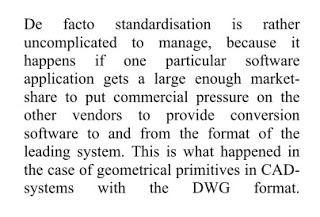This interesting article appeared on AUGI recently. It likens building procurement with what it takes to raise a child … an allegory that, while seeming a little far-fetched, it does seem to carry through quite consistently. Here are a few quotes:
We are doing this collaboration trick together on multi-gazillion dollar projects, based on the rudimentary idea that we all, to some degree, use the same definition. To me that sounds like a disaster waiting to happen. BIM was supposed to make all this more easy. We were supposed to make the entire design and build process less prone to errors. Yet, while we were doing our thing for a few hundred years with those awful “traditional” methods, at least it was clear who did what, how, and when.
…
When we look at the design process from first conceptual design (birth) to being construction-ready (graduation), we, the professionals in the AEC industry, need to teach our buildings.
The BIM philosophy states that we should do this as a continuous process with a regular addition of skills without gaps or dropoffs.
To do that, we need an educational plan, called a BIM Execution Plan, which defines who does what, when, where and how; and perhaps most importantly, illustrates the ways in which all these elements are tied together.
IPD is a logical next step, where we get one team of teachers to work the educational plan throughout the entire process of growing up. When you use IPD to nurture a building, the BIM-E/BEP is called an IPDP.






